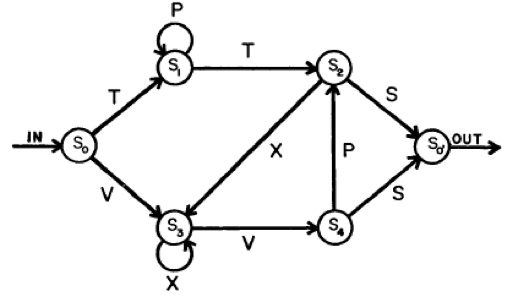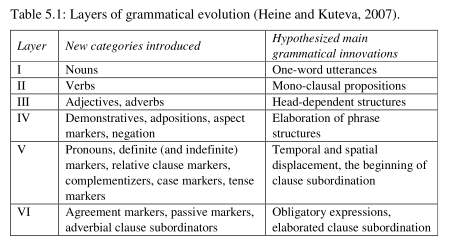Much of the work I plan to do for this year involves integrating traditional and contemporary theories of language change within an evolutionary framework. In my previous post I introduced the concept of degeneracy, which, to briefly recap, refers to components that have a structure-to-function ratio of many-to-one, with a single degenerate structure being capable of performing distinct functions under different conditions (pluripotent). Whitcare (2010: 5) provides a case in point for biological systems: here, the adhesin gene family in A. Saccharomyces “ expresses proteins that typically play unique roles during development, yet can perform each other’s functions when expression levels are altered”.
But what about degeneracy in language? For a start, we already know from basic linguistic theory forms (i.e. structures) are paired with meanings (i.e. functions). More recent work has expanded upon this notion, especially in developing the concept of constructions (Goldberg, 2003): “direct form-meaning pairings that range from the very specific (words or idioms) to the more general (passive constructions, ditranstive construction), and from very small units (words with affixes, walked) to clause-level or even discourse-level units” (Beckner et al., 2009: 5). When applied to constructions, degeneracy fits squarely with work identifying language as a Complex Adaptive System (see here) and as a culturally transmitted replicator (see here and here), which offers a link between the generation of first order synchronic variation – in the form of innovation (e.g. newly introduced linguistic material in the form of sounds, words, grammatical constructions etc) – and the selection, propagation and fixation of linguistic variants within a speaker community.
For the following example, I’m going to look at a specific type of discourse-pragmatic feature, or construction, which has undergone renewed interest over the last thirty-years. Known as General Extenders (GEs) – utterance- or clause-final discourse particles, such as and stuff and or something – researchers are realising that, far from being superfluous linguistic baggage, these features “carry social meaning, perform indispensible functions in social interaction, and constitute essential elements of sentence grammar” (Pichler, 2010: 582). Of specific relevance, GEs, and discourse-pragmatic particles more generally, are multifunctional: that is, they are not confined to a single communicative domain, and can even come to serve multiple roles within the same communicative context or utterance.
It is proposed the concept of degeneracy will allow us to explain how multifunctional discourse markers emerge from variation existent at structural components of linguistic organisation, such as the phonological and morphosyntactic components. If anything, I hope the post might serve as some food for thought, as I’m still grappling with the applications of the theory (and whether there’s anything useful to say!).
Continue reading “Robustness, Evolvability, Degeneracy and stuff like that…”



